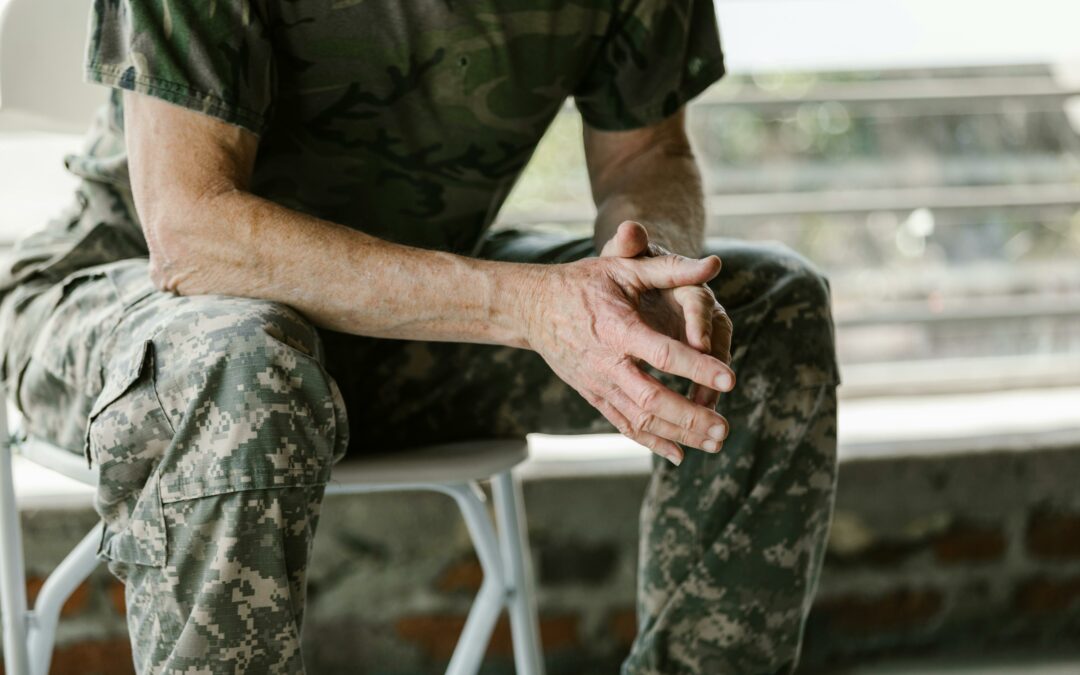Discover effective strategies for understanding and managing PTSD in this comprehensive guide.
What is PTSD?
Post-Traumatic Stress Disorder (PTSD) is a mental health condition that can develop in individuals who have experienced or witnessed a traumatic event. It is a natural response to an unnatural and distressing situation, such as war, sexual assault, natural disasters, or accidents. PTSD can affect anyone, regardless of age, gender, or background.
Common symptoms of PTSD include intrusive memories or flashbacks of the traumatic event, nightmares, severe anxiety, and avoidance of triggers associated with the trauma. Individuals with PTSD may also experience negative changes in their thoughts and mood, such as feelings of guilt, shame, or detachment from others.
It’s important to note that not everyone who experiences a traumatic event will develop PTSD. The development of PTSD depends on various factors, including the severity of the trauma, personal resilience, and the availability of support systems.
Seeking professional help is crucial for individuals with PTSD. With the right diagnosis and treatment, it is possible to effectively manage and recover from PTSD.
Causes and Symptoms of PTSD
PTSD can be caused by a wide range of traumatic events, including but not limited to:
- Combat exposure
- Physical or sexual assault
- Childhood abuse or neglect
- Natural disasters
- Serious accidents
- Witnessing a violent or life-threatening event
The symptoms of PTSD can vary from person to person, but some common symptoms include:
- Intrusive memories or flashbacks of the traumatic event
- Nightmares
- Intense feelings of distress or anxiety when exposed to triggers associated with the trauma
- Avoidance of situations, places, or people that remind them of the trauma
- Negative changes in thoughts and mood, such as feelings of guilt, shame, or detachment
- Hyperarousal, including difficulty sleeping, irritability, and hypervigilance
If you or someone you know is experiencing these symptoms after a traumatic event, it is important to seek professional help for an accurate diagnosis and appropriate treatment.
Diagnosis and Treatment Options
Diagnosing PTSD involves a thorough assessment by a mental health professional. They will consider the individual’s symptoms, the duration and intensity of those symptoms, and the impact on daily functioning. The Diagnostic and Statistical Manual of Mental Disorders (DSM-5) provides criteria for diagnosing PTSD.
Treatment for PTSD typically involves a combination of psychotherapy, medication, and self-care strategies. Some common treatment options include:
- Cognitive Behavioral Therapy (CBT): This form of therapy helps individuals identify and change negative thought patterns and behaviors related to the traumatic event. It can help reduce anxiety, manage symptoms, and improve coping skills.
- Eye Movement Desensitization and Reprocessing (EMDR): This therapy technique involves the use of eye movements or other forms of bilateral stimulation to help individuals process and reframe traumatic memories.
- Medications: Antidepressant or anti-anxiety medications may be prescribed to help manage symptoms of PTSD. These medications can help reduce anxiety, improve sleep, and stabilize mood.
- Self-Care Strategies: Engaging in self-care activities such as regular exercise, relaxation techniques, and maintaining a healthy lifestyle can contribute to overall well-being and help manage symptoms of PTSD.
It’s important to work with a qualified mental health professional to determine the most appropriate treatment plan for an individual with PTSD.
Coping Mechanisms and Self-Care
Coping mechanisms and self-care practices play a crucial role in managing PTSD symptoms and promoting overall well-being. Here are some strategies that can be helpful:
- Establish a support network: Surround yourself with trusted friends, family members, or support groups who can provide understanding and empathy.
- Practice relaxation techniques: Deep breathing exercises, meditation, yoga, and progressive muscle relaxation can help reduce anxiety and promote relaxation.
- Engage in physical activity: Regular exercise, such as walking, jogging, or swimming, can help reduce stress and improve mood.
- Maintain a healthy lifestyle: Eating a balanced diet, getting enough sleep, and avoiding excessive alcohol or substance use can contribute to better mental and physical health.
- Express yourself creatively: Engaging in creative activities such as painting, writing, or playing music can serve as a healthy outlet for emotions.
- Set realistic goals: Breaking tasks into smaller, manageable steps can help reduce feelings of overwhelm and increase a sense of accomplishment.
It’s important to remember that coping mechanisms may vary for each individual, and it may take time to find what works best. It’s okay to seek professional guidance to explore and develop effective coping strategies.
Support Systems and Resources
Building a strong support system is essential for individuals with PTSD. Here are some resources and support options that can be beneficial:
- Therapy or counseling: Working with a qualified therapist who specializes in trauma can provide guidance, support, and effective coping strategies.
- Support groups: Joining a support group for individuals with PTSD can offer a sense of community, understanding, and shared experiences.
- Online communities: Participating in online forums or communities dedicated to PTSD can provide a platform for connecting with others and accessing valuable resources.
- Helplines and hotlines: Various organizations offer helplines and hotlines that provide immediate support and assistance for individuals in crisis or distress.
- Educational materials: Books, articles, and websites dedicated to PTSD can provide valuable information, tips, and insights.
Remember, reaching out for support is not a sign of weakness. It is a courageous step towards healing and recovery.
